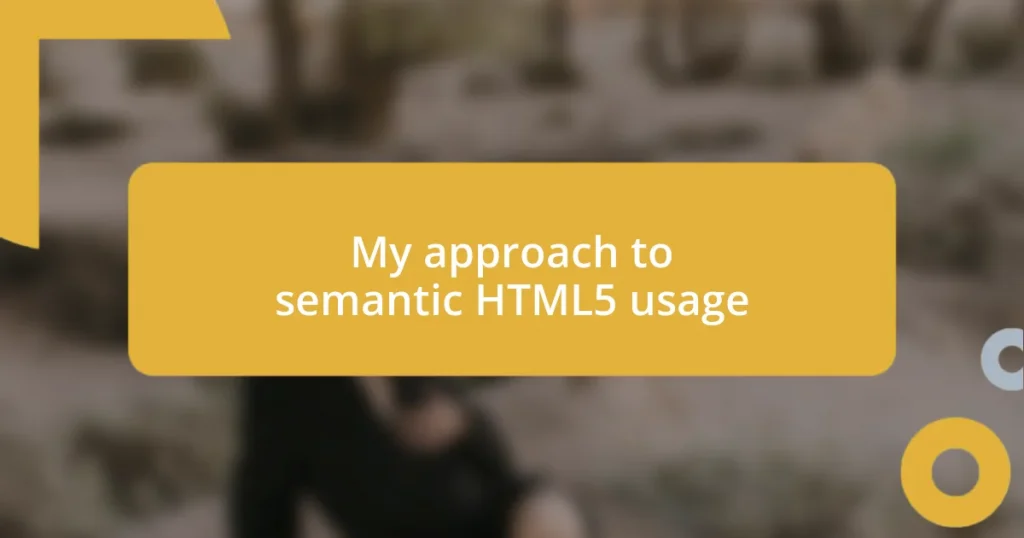Key takeaways:
- Semantic HTML enhances user experience and accessibility, making navigation intuitive for all users, including those with disabilities.
- Using semantic elements like
<article>,<header>, and<nav>improves SEO and creates a clear content hierarchy. - Documenting the purpose of semantic choices enhances code maintainability and facilitates collaboration among developers.
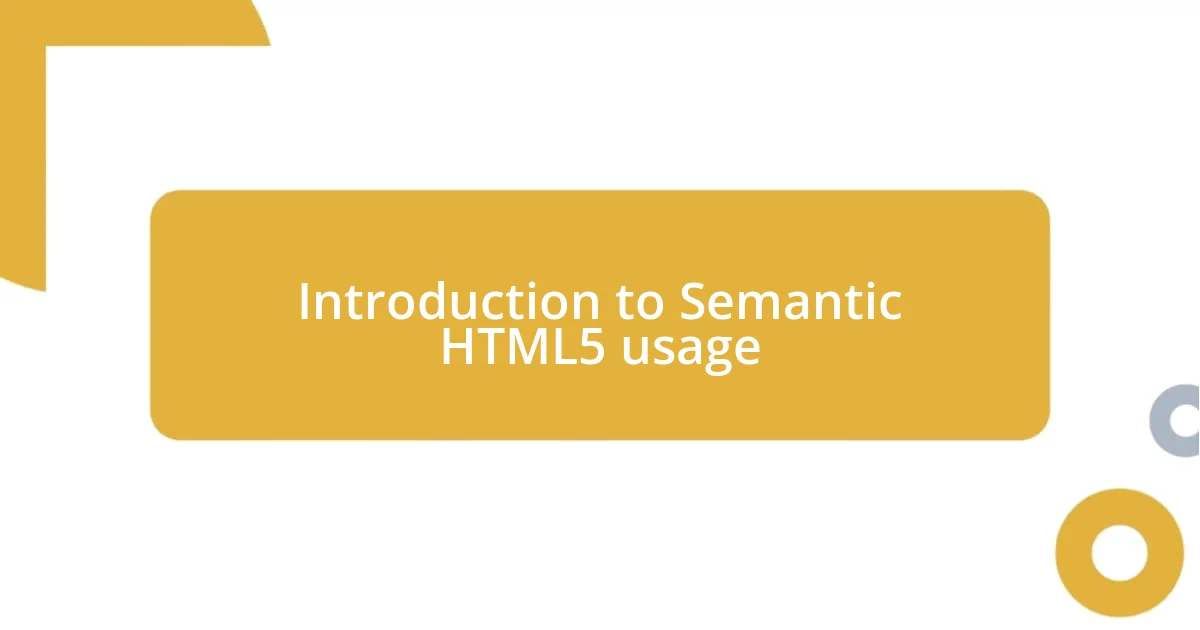
Introduction to Semantic HTML5 usage
When I first started working with HTML5, the concept of semantic markup felt like a revelation. Semantic HTML5 isn’t just about structuring a webpage; it’s about giving meaning to the content, making it easier for browsers and developers alike. I recall a project where proper semantic usage transformed a confusing layout into a user-friendly experience that truly resonated with the audience.
Have you ever been frustrated navigating a website where the structure felt all wrong? That’s often a result of neglecting semantics. By using elements like <article>, <section>, and <header>, I found that not only did my sites perform better in search engines, but they also became more accessible to users—and that’s something I genuinely care about.
Every time I define a new section of content with the right HTML5 element, I feel a sense of accomplishment. It’s like telling a story where each part has its place, making the whole narrative clearer. This approach not only boosts usability but also enhances SEO, allowing your content to shine in the crowded digital landscape. Don’t you think it’s time we embraced the power of semantics in our web development practices?
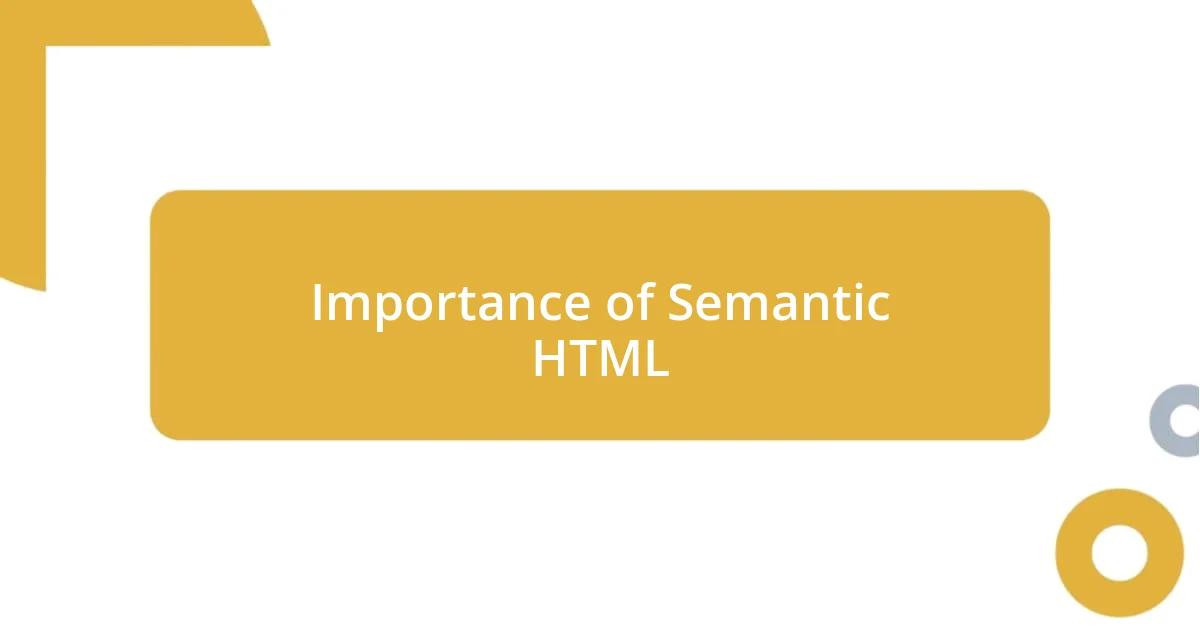
Importance of Semantic HTML
The importance of semantic HTML cannot be overstated, as it serves as the backbone of a well-structured webpage. I recall a time when I used generic <div> tags for everything, which made it challenging for both users and search engines to comprehend the content hierarchy. Incorporating semantic elements not only improved the clarity of my code but also enhanced the overall user experience, making navigation feel intuitive.
Here are some key benefits of using semantic HTML:
- Improved Accessibility: Screen readers can better interpret semantic tags, making content accessible to users with disabilities.
- Enhanced SEO: Search engines favor semantically correct HTML, often resulting in better rankings for your site in search results.
- Maintainable Code: Well-structured markup is easier to read and maintain, reducing the effort needed for future updates.
- Consistent Styling: Semantic elements allow for consistent CSS styling based on the meaning of the content rather than class names.
- Clearer Communication: Each element carries meaning, helping developers understand the purpose of content quickly, as if reading a well-written book.
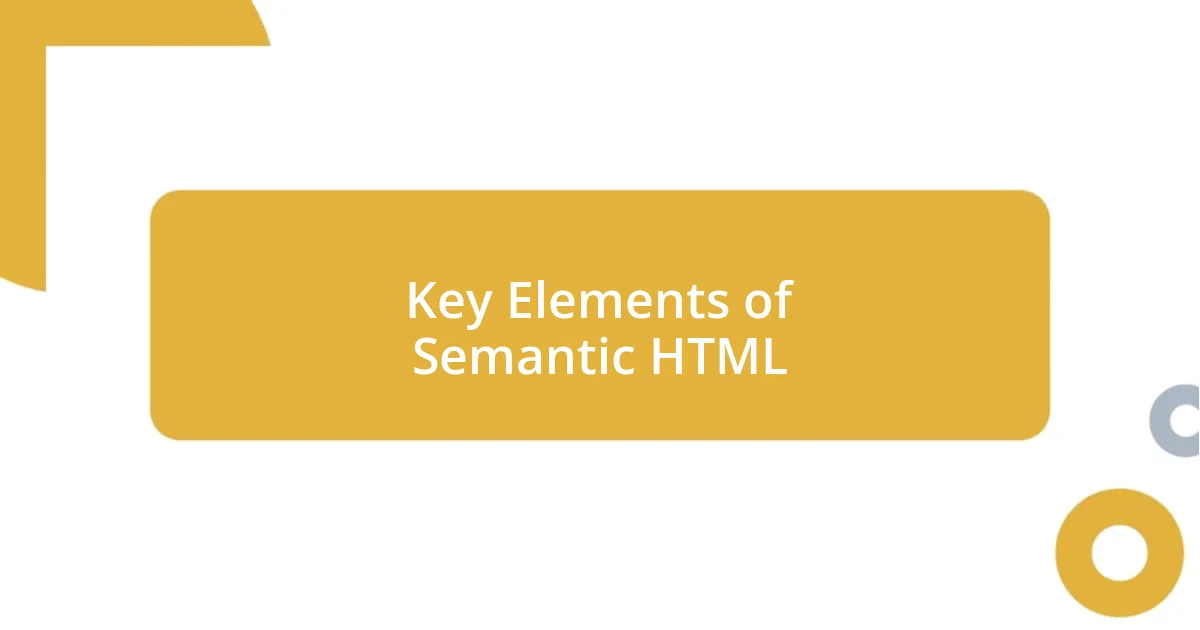
Key Elements of Semantic HTML
In my experience with semantic HTML, I’ve found that using elements like <aside> and <footer> truly clarifies the relationships between content sections. For instance, during a recent project, I categorized additional information under <aside>, and hearing user feedback about how easily they grasped the site’s structure was rewarding. It reinforces the idea that every tag has its purpose, enhancing both usability and readability.
Moreover, the <figure> and <figcaption> tags offer an elegant way to present images. I remember vividly when I incorporated these tags into a photo gallery. Having a caption right under each image made it feel more polished and professional, allowing users to connect deeper with the visuals. It’s fascinating how such simple additions can elevate the overall aesthetic and functionality of a webpage.
When I reflect on how these semantic elements contribute to clarity, it becomes clear that they do more than just serve a technical function. They foster an authentic dialogue between the content and the viewer. Websites built with semantic principles can resonate more profoundly, creating an experience that feels both credible and thoughtful.
| Semantic Element | Purpose |
|---|---|
| <article> | Defines independent content, like a blog post. |
| <footer> | Indicates the footer of a section or page. |
| <aside> | Represents content related to surrounding content. |
| <figure> | Encapsulates images or illustrations with descriptions. |
| <nav> | Defines navigation links for a webpage. |
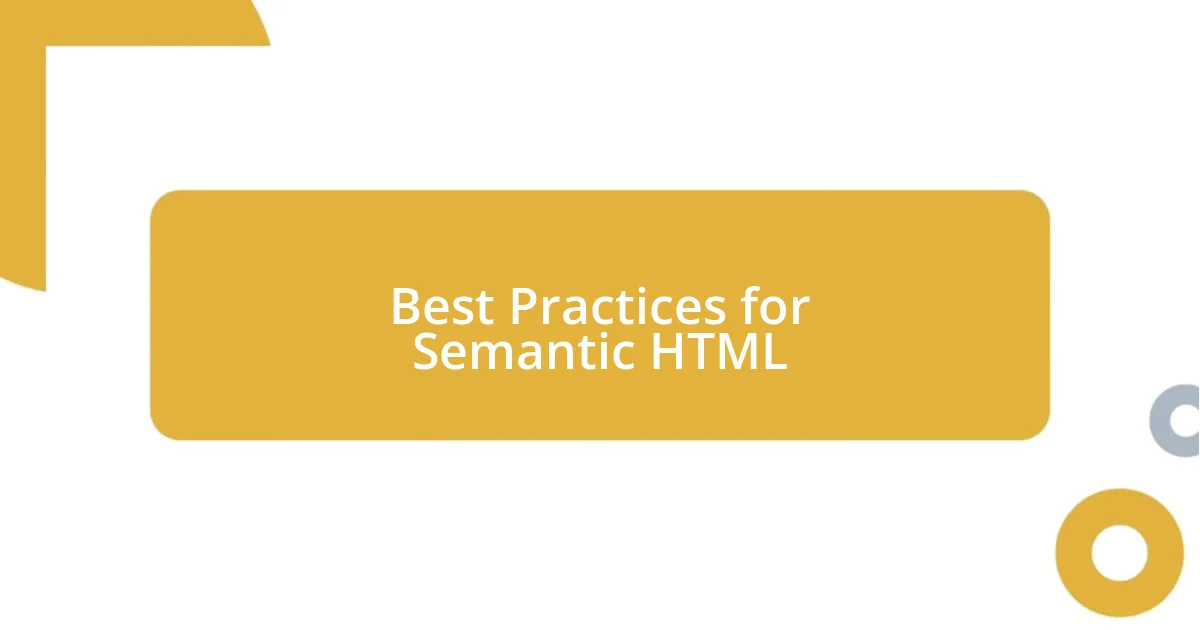
Best Practices for Semantic HTML
Using semantic HTML requires an intentional approach, and I’ve learned that context matters. During one of my early projects, I initially applied generic tags, but later switched to semantic elements like <nav> for navigation and <article> for blog posts. The transformation was remarkable. I felt a sense of satisfaction as user feedback highlighted how much easier it became for them to navigate and find the information they needed. Isn’t it rewarding when the code you write not only functions well but also enhances the user’s experience?
One of my favorite practices is ensuring that every section of my content is clearly defined. When I implemented <header> elements for each major section, I noticed a significant improvement in site structure. It almost felt like organizing my thoughts on a page, which in turn helped users comprehend the content flow effortlessly. Have you ever tried this? You might be amazed by how it transforms the way you view your own work—and how others perceive it.
Always remember to document the intention behind your semantic choices. Recently, while revisiting an old project, I realized that adding comments near my semantic elements made my code much more accessible for future updates. It brought back memories of late nights spent troubleshooting due to a lack of clarity. Reflecting on those challenges, I became convinced that well-documented semantic HTML wasn’t just a best practice; it was a game-changer that ensures both you and your team can work collaboratively without a hitch!
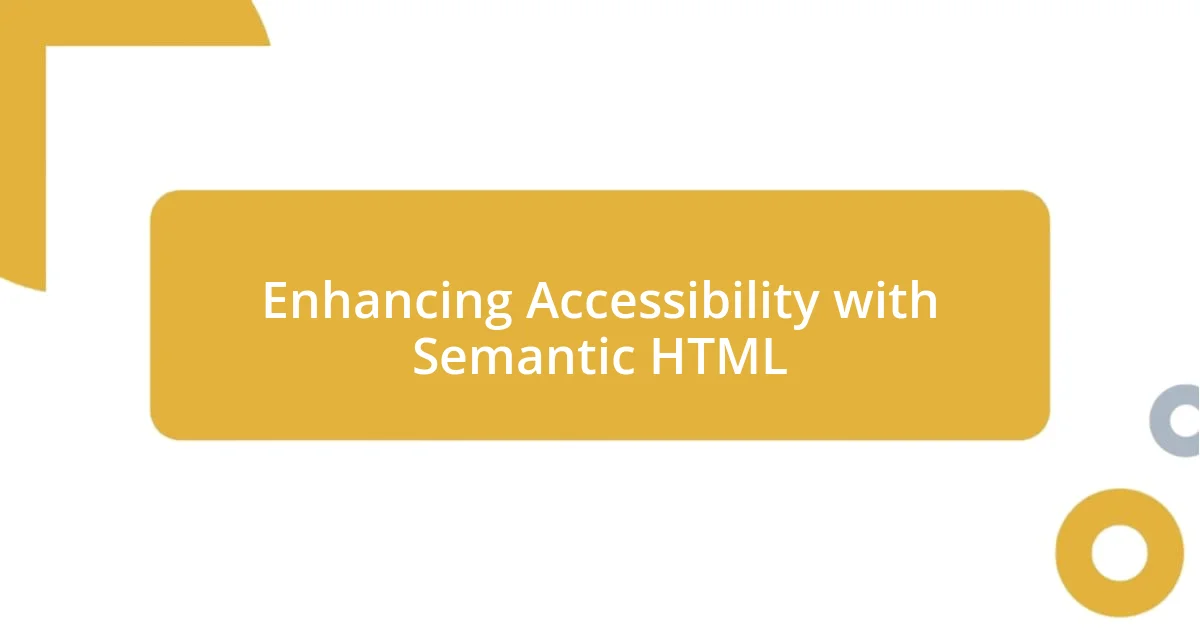
Enhancing Accessibility with Semantic HTML
When I think about accessibility, the role of semantic HTML becomes even more significant. For example, using the <nav> element not only groups navigation links but also signals to screen readers that these links are pivotal for users seeking to navigate a website efficiently. I recall a project where I was pleasantly surprised by the enthusiastic feedback from visually impaired users who found my site significantly easier to navigate. It made me realize that proper tagging can directly impact the browsing experience of those who rely on assistive technologies.
In another instance, I decided to emphasize the importance of headers through proper use of <h1>, <h2>, and <h3> tags. The hierarchy created by these headings didn’t just improve SEO; it also made the content immensely more approachable for users with cognitive disabilities. I remember the feeling of satisfaction when a user commented that they could follow along with the article much better than on sites that used irregular header tags. Isn’t it incredible how something as straightforward as structured headings can foster a sense of inclusivity?
The significance of accessible forms truly struck me during a recent project when I incorporated labels alongside form controls using the <label> element. This made a world of difference for users relying on screen readers, as it provided clear context for each input field. I felt a profound sense of achievement when the feedback poured in, emphasizing how they could finally complete forms without confusion. This experience underscored for me that our choices in semantic HTML are not merely technical decisions—they are vital steps towards creating a web that welcomes everyone.










